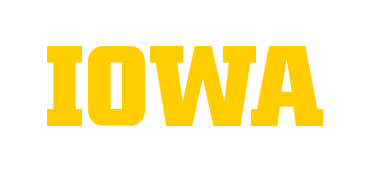Artist book
Found in 2493 Collections and/or Records:
They Call It Stormy Monday... / Sutherland, W. Mark., 1997
Each page is a 200% photocopied magnification of the previous page, the process continuing until the image explodes out of the frame of the page. -- Source of annotation: Marvin or Ruth Sackner.
They Ran Out / Golden, Alisa J.., 1991
Things Constantly Moving Against Electric Current / Huth, Geof., 1992
The poems were written/designed in 1987 and the Endwords in 1992, expressly as part of a gift to Marvin and Ruth Sackner. -- Source of annotation: Marvin or Ruth Sackner.
Thinking Editions / Hutchins, Edward H.., 1999
The card is printed on green, orange, pink and yellow stick card stock and must be bent open recto and verso to read the listings. -- Source of annotation: Marvin or Ruth Sackner.
Third Joy... / Heimbach, Paul., 1989
This / Hirschman, Jack A.., 1991
The theme deals with the new order of Eastern European politics after the collapse of Communism in the Soviet Union. -- Source of annotation: Marvin or Ruth Sackner.
This The Mind / Robert The., 1994
The word "THIS" has been cut out of the entire book including the covers with a jigsaw. -- Source of annotation: Marvin or Ruth Sackner.
Thought Alice / Avadenka, Lynne., 1983
Three Letters / Depew, Wally., 1970
The three letters in this book with varied type fonts and placement on the pages are J,K, and X. The last three printed pages depict a cryptic message, e.g., 'K X J,' 'and,' '1 Sign.' -- Source of annotation: Marvin or Ruth Sackner.
Three Words / Depew, Wally., 1973
The three words, rubberstamped each on one of the pages are SHIT, FUCK and CUNT. The remainded of thr pages conist of abstract woodcut prints. -- Source of annotation: Marvin or Ruth Sackner.
Thresholds of Perception and Annoyance / Powell, David., 1989
Throne Fog / Crozier, Robin ; Bennett, John M.., 1989
Images of photographic found images of cases and boxes are collaged onto the page with a handwritten label describing the object in a seemingly unrelated way. -- Source of annotation: Marvin or Ruth Sackner.
Time Art / Mackowiak, Barbara., 1979
Mackiowiak prints an aphorism on each page which should incorporate the word, "time" but instead substitutes the word "art." -- Source of annotation: Marvin or Ruth Sackner.
Titles in Print / Johnson, James., 1992
Tits of the Motherland (Poems) by David Burliuk / Nussberg, Lev ; Nussberg, Dika ; Janecek G., 1982
This handmade book was published to commemorate the 100th birthday of the poet, David Burliuk, "spiritual rebel and Russian futurist". The verses of Burliuk were collected by Constantin Kuzminsky, Gerald Janecek and Lev Nussberg. The book is divided into two parts: the first half consists of 90 collaged pages, of varying colored papers with Russian Poetry. The second half consists of Burliuk's poetry translated into English, replete with colored pencil drawings over the poetic texts. Several drawings refer to images in the Russian avant garde literatures e.g., a red diamond (Burliuk was a founder of the literary movement Jack of Diamonds), a constructivist coffin (of Malevich ?), a red devil much like the image on the cover of Trou. The poems and illustrations preponderantly deal with the female breast, -- Source of annotation: Marvin or Ruth Sackner.
To Be Filled, 1987
Pages of the book are sealed together. -- Source of annotation: Marvin or Ruth Sackner.
To Multiply / Crozier, Robin., 1980
Tofte Journal / Zucker, Joe., 1994
Published on the occasion of Joe Zucker's exhibition at Nolan/Eckman Gallery. -- Source of annotation: Marvin or Ruth Sackner.
Tola, 1990
The theme of this book deals with women's lips, eyes, and vagina. -- Source of annotation: Marvin or Ruth Sackner.
Tomzack, 1997
The pages of this book are rolled on a wooden rod and held in place by a malleable lead sheet stamped with the title, "Tomzack." -- Source of annotation: Marvin or Ruth Sackner.
